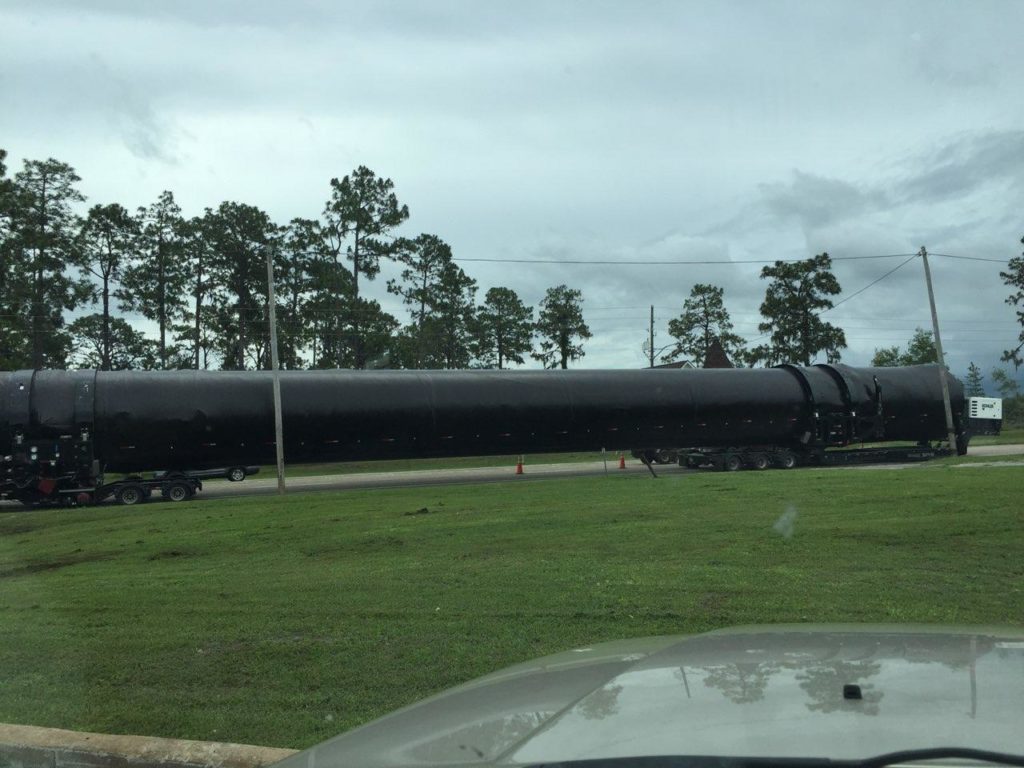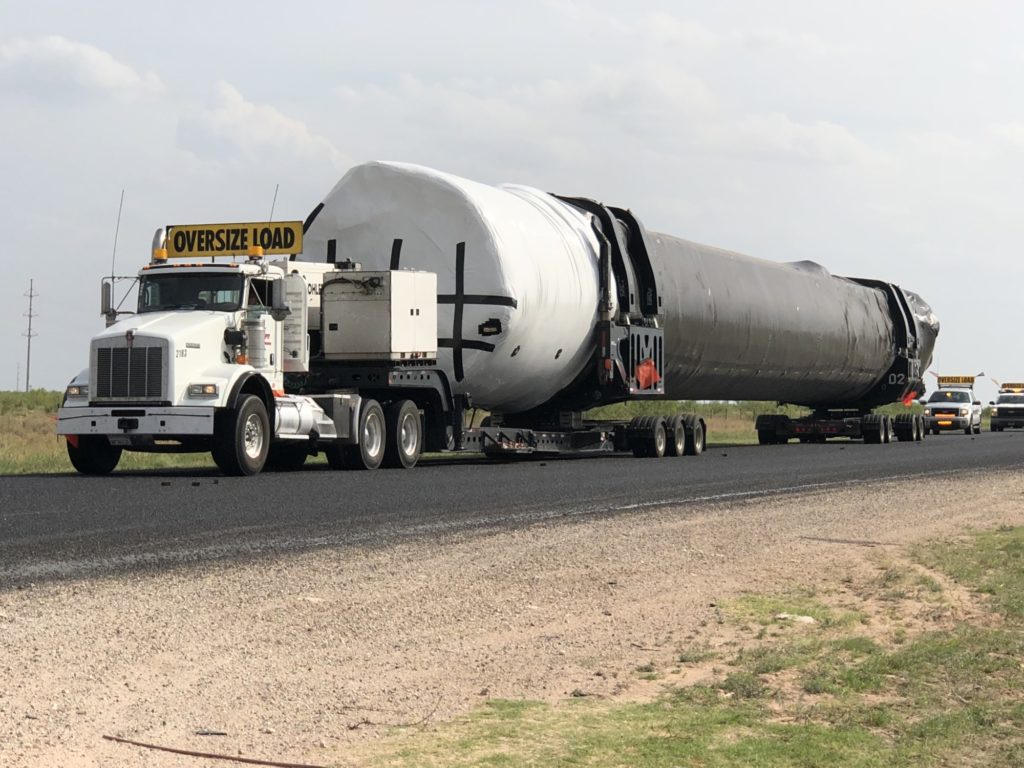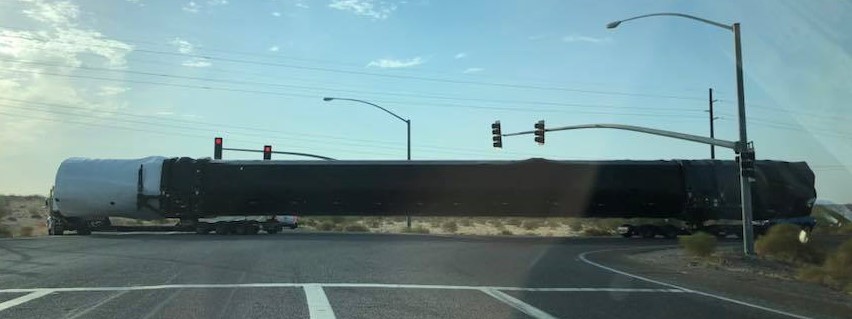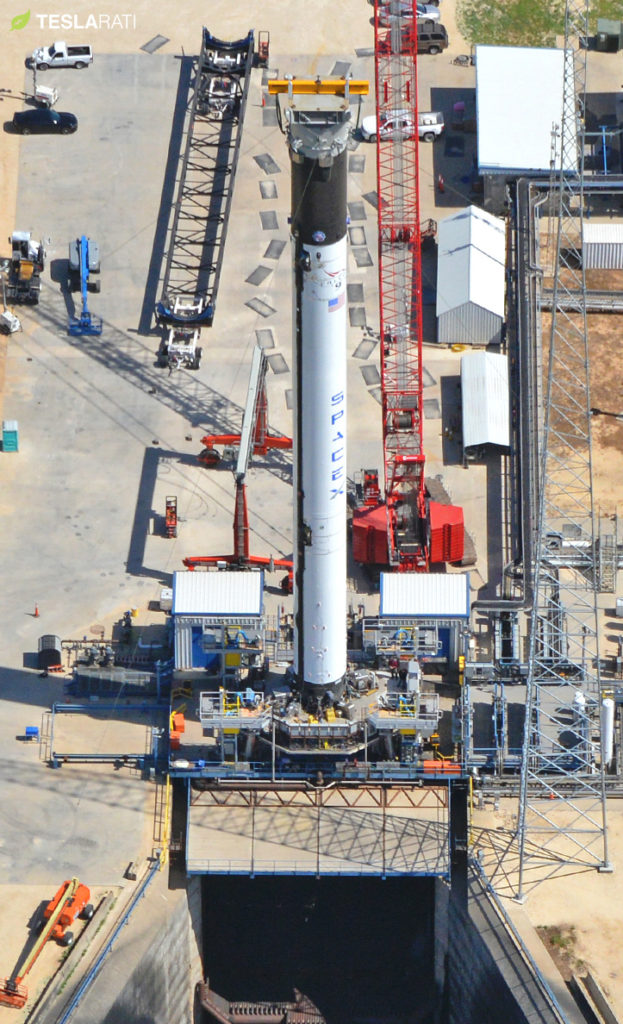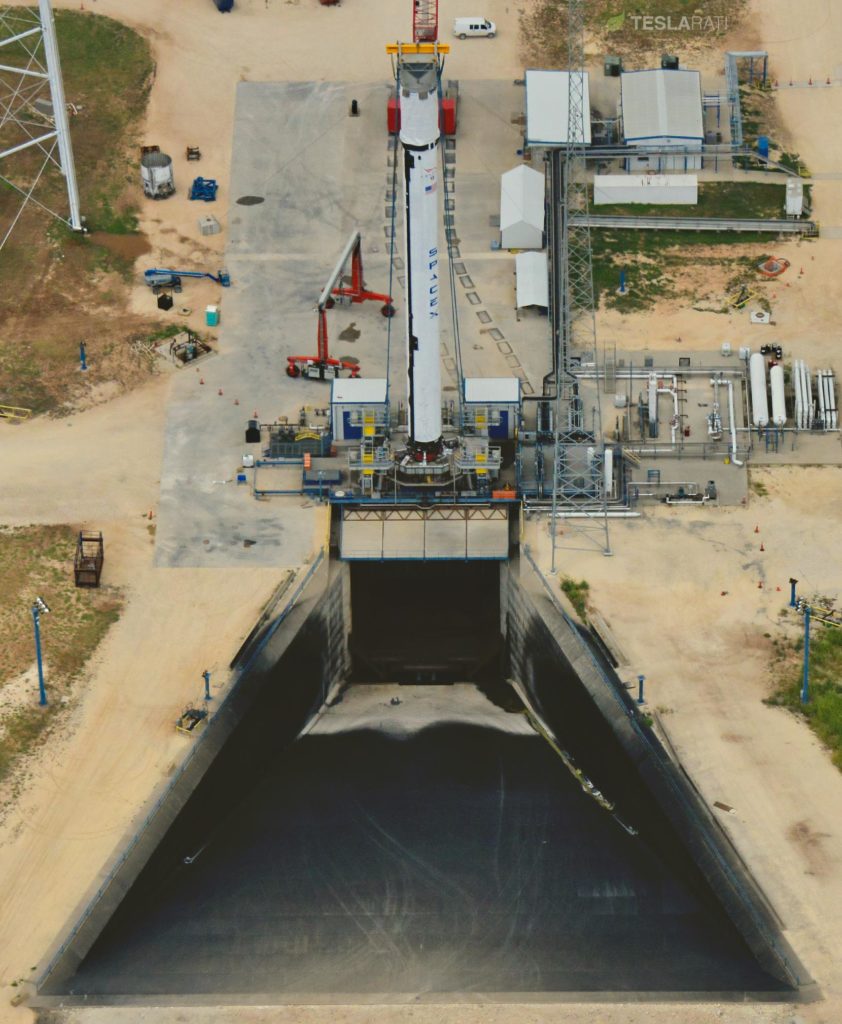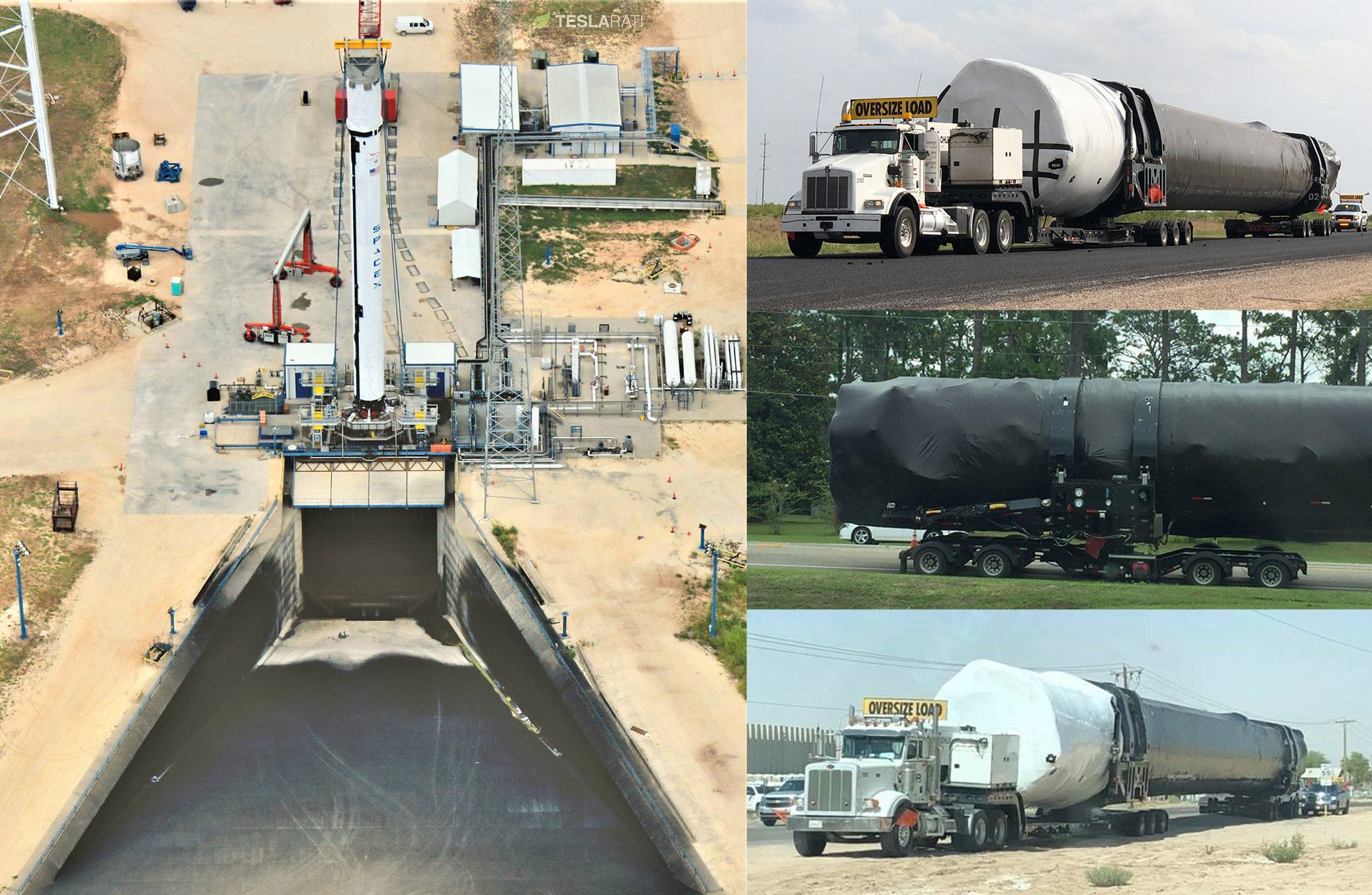

News
SpaceX’s reusable Falcon 9 fleet takes shape as rocket booster production ramps
Per a source involved in SpaceX’s cross-country rocket transport infrastructure, the company continues to beat the expectations of its closest followers, pointing towards an inflection point in the production and testing of new Falcon 9 Block 5 rocket boosters and upper stages.
Building off of a number of Falcon 9 booster, upper stage, and fairing spottings over the past six weeks, it can reasonably be concluded that SpaceX has completed, shipped, tested (i.e. static fires in Texas), and delivered (to launch sites) as many Falcon 9 rockets in six weeks as were shipped, tested, and launched in the preceding five months – perhaps even 30% more.
This extreme production ramp can be attributed almost entirely to the maturation of Falcon 9 Block 5’s design and manufacturing apparatus, owing to the fact that the rocket’s most recent (and theoretically final) upgrade necessitated significant changes to almost every major aspect of the Falcon family. Meanwhile, a considerable amount of time and effort had to be directed towards the optimization and production of the first Falcon Heavy, to some extent an entirely bespoke rocket built off of much older Falcon 9 cores and a center core design unlikely to be repeated.
- Falcon 9 B1047 spotted in Florida just a short trip away from Cape Canaveral, where it will likely launch Telsat 19V in mid-July. (Reddit /u/fatherofzeuss)
- What was likely B1049 spotted heading to McGregor, Texas for static fire testing, June 11. (TeslaMotorsClub /u/nwdiver)
- What has to be B1050 on its way to McGregor for static fire testing, July 6. (anonymous)
With Falcon Heavy completed and launched in February and the last non-Block 5 booster built, launched, and relaunched in the last three months, Falcon 9 Block 5 has for the first time been allowed to become SpaceX’s near-singular focus for manufacturing and testing, both in the Hawthorne factory, the McGregor, TX testing facility, and SpaceX’s three launch pads.
This change in focus likely means that SpaceX was finally able to rid itself of what were effectively multiple SKUs (serial versions) of its workhorse rocket, presumably allowing their supplier and manufacturing apparatus to be significantly streamlined. With low-volume production and limited manufacturing space, multiple SKUs were likely a massive challenge for the Hawthorne factory and the McGregor testing facility, where the stand used to test Falcon 9 boosters likely required significant modifications to support Block 5 static fires. Meanwhile, SpaceX’s three launch pads in Florida and California all needed their own series of upgrades to transfer from Block 4 to Block 5.
- B1047 captured testing in McGregor, Texas, April 2018. (Teslarati/Aero Photo)
- Falcon 9 B1049 spotted on stand in McGregor, TX on June 15.
Regardless, SpaceX has clearly gotten its manufacturing feet back under it and has ever-growing confidence in the nascent Block 5 iteration of Falcon 9. COO and President Gwynne Shotwell noted in a May 2018 CNBC interview that she believed the Hawthorne factory was nominally capable of producing one Merlin engine a day and two Block 5 boosters per month, and this recent burst of activity appears to heartily confirm her estimates. What remains to be seen is if what appears to be a six-week sprint (at least relative to the last year or so of rocket building) will instead prove to be the norm for the second half of 2018 and 2019.
If SpaceX can continue to sustain this extraordinarily rapid-fire pace of rocket production for just the next six months, the company could round out 2018 with a strong start to what Shotwell described would be a “sizable fleet” of Falcon boosters. Block 5 boosters B1047, B1048, and B1049 are now finished with static fire testing in McGregor after shipping from Hawthorne and either at launch sites or on their way, while B1050 most likely just arrived at McGregor for its own static fire. The first successfully launched and recovered Block 5 booster (B1046) was said by CEO Elon Musk to be undergoing a thorough teardown analysis – a process that almost certainly has been completed given the burst of Block 5 shipments and testing – and should be free to support additional launches later this year.
If SpaceX continues to produce nearly two boosters per month, the company could round out 2018 with a fleet of nearly 16 Falcon 9 boosters, each of which has been designed to support anywhere from a handful to a hundred reuses.
Follow us for live updates, peeks behind the scenes, and photos from Teslarati’s East and West Coast photographers.
Teslarati – Instagram – Twitter
Tom Cross – Twitter
Pauline Acalin – Twitter
Eric Ralph – Twitter
News
Tesla cleared in Canada EV rebate investigation
Tesla has been cleared in an investigation into the company’s staggering number of EV rebate claims in Canada in January.

Canadian officials have cleared Tesla following an investigation into a large number of claims submitted to the country’s electric vehicle (EV) rebates earlier this year.
Transport Canada has ruled that there was no evidence of fraud after Tesla submitted 8,653 EV rebate claims for the country’s Incentives for Zero-Emission Vehicles (iZEV) program, as detailed in a report on Friday from The Globe and Mail. Despite the huge number of claims, Canadian authorities have found that the figure represented vehicles that had been delivered prior to the submission deadline for the program.
According to Transport Minister Chrystia Freeland, the claims “were determined to legitimately represent cars sold before January 12,” which was the final day for OEMs to submit these claims before the government suspended the program.
Upon initial reporting of the Tesla claims submitted in January, it was estimated that they were valued at around $43 million. In March, Freeland and Transport Canada opened the investigation into Tesla, noting that they would be freezing the rebate payments until the claims were found to be valid.
READ MORE ON ELECTRIC VEHICLES: EVs getting cleaner more quickly than expected in Europe: study
Huw Williams, Canadian Automobile Dealers Association Public Affairs Director, accepted the results of the investigation, while also questioning how Tesla knew to submit the claims that weekend, just before the program ran out.
“I think there’s a larger question as to how Tesla knew to run those through on that weekend,” Williams said. “It doesn’t appear to me that we have an investigation into any communication between Transport Canada and Tesla, between officials who may have shared information inappropriately.”
Tesla sales have been down in Canada for the first half of this year, amidst turmoil between the country and the Trump administration’s tariffs. Although Elon Musk has since stepped back from his role with the administration, a number of companies and officials in Canada were calling for a boycott of Tesla’s vehicles earlier this year, due in part to his association with Trump.
News
Tesla Semis to get 18 new Megachargers at this PepsiCo plant
PepsiCo is set to add more Tesla Semi Megachargers, this time at a facility in North Carolina.

Tesla partner PepsiCo is set to build new Semi charging stations at one of its manufacturing sites, as revealed in new permitting plans shared this week.
On Friday, Tesla charging station scout MarcoRP shared plans on X for 18 Semi Megacharging stalls at PepsiCo’s facility in Charlotte, North Carolina, coming as the latest update plans for the company’s increasingly electrified fleet. The stalls are set to be built side by side, along with three Tesla Megapack grid-scale battery systems.
The plans also note the faster charging speeds for the chargers, which can charge the Class 8 Semi at speeds of up to 1MW. Tesla says that the speed can charge the Semi back to roughly 70 percent in around 30 minutes.
You can see the site plans for the PepsiCo North Carolina Megacharger below.

Credit: PepsiCo (via MarcoRPi1 on X)

Credit: PepsiCo (via MarcoRPi1 on X)
READ MORE ON THE TESLA SEMI: Tesla to build Semi Megacharger station in Southern California
PepsiCo’s Tesla Semi fleet, other Megachargers, and initial tests and deliveries
PepsiCo was the first external customer to take delivery of Tesla’s Semis back in 2023, starting with just an initial order of 15. Since then, the company has continued to expand the fleet, recently taking delivery of an additional 50 units in California. The PepsiCo fleet was up to around 86 units as of last year, according to statements from Semi Senior Manager Dan Priestley.
Additionally, the company has similar Megachargers at its facilities in Modesto, Sacramento, and Fresno, California, and Tesla also submitted plans for approval to build 12 new Megacharging stalls in Los Angeles County.
Over the past couple of years, Tesla has also been delivering the electric Class 8 units to a number of other companies for pilot programs, and Priestley shared some results from PepsiCo’s initial Semi tests last year. Notably, the executive spoke with a handful of PepsiCo workers who said they really liked the Semi and wouldn’t plan on going back to diesel trucks.
The company is also nearing completion of a higher-volume Semi plant at its Gigafactory in Nevada, which is expected to eventually have an annual production capacity of 50,000 Semi units.
Tesla executive teases plan to further electrify supply chain
News
Tesla sales soar in Norway with new Model Y leading the charge
Tesla recorded a 54% year-over-year jump in new vehicle registrations in June.

Tesla is seeing strong momentum in Norway, with sales of the new Model Y helping the company maintain dominance in one of the world’s most electric vehicle-friendly markets.
Model Y upgrades and consumer preferences
According to the Norwegian Road Federation (OFV), Tesla recorded a 54% year-over-year jump in new vehicle registrations in June. The Model Y led the charge, posting a 115% increase compared to the same period last year. Tesla Norway’s growth was even more notable in May, with sales surging a whopping 213%, as noted in a CNBC report.
Christina Bu, secretary general of the Norwegian EV Association (NEVA), stated that Tesla’s strong market performance was partly due to the updated Model Y, which is really just a good car, period.
“I think it just has to do with the fact that they deliver a car which has quite a lot of value for money and is what Norwegians need. What Norwegians need, a large luggage space, all wheel drive, and a tow hitch, high ground clearance as well. In addition, quite good digital solutions which people have gotten used to, and also a charging network,” she said.
Tesla in Europe
Tesla’s success in Norway is supported by long-standing government incentives for EV adoption, including exemptions from VAT, road toll discounts, and access to bus lanes. Public and home charging infrastructure is also widely available, making the EV ownership experience in the country very convenient.
Tesla’s performance in Europe is still a mixed bag, with markets like Germany and France still seeing declines in recent months. In areas such as Norway, Spain, and Portugal, however, Tesla’s new car registrations are rising. Spain’s sales rose 61% and Portugal’s sales rose 7% last month. This suggests that regional demand may be stabilizing or rebounding in pockets of Europe.
-

 Elon Musk2 weeks ago
Elon Musk2 weeks agoTesla investors will be shocked by Jim Cramer’s latest assessment
-

 Elon Musk2 days ago
Elon Musk2 days agoxAI launches Grok 4 with new $300/month SuperGrok Heavy subscription
-

 Elon Musk4 days ago
Elon Musk4 days agoElon Musk confirms Grok 4 launch on July 9 with livestream event
-

 News1 week ago
News1 week agoTesla Model 3 ranks as the safest new car in Europe for 2025, per Euro NCAP tests
-

 Elon Musk2 weeks ago
Elon Musk2 weeks agoA Tesla just delivered itself to a customer autonomously, Elon Musk confirms
-

 Elon Musk1 week ago
Elon Musk1 week agoxAI’s Memphis data center receives air permit despite community criticism
-

 News2 weeks ago
News2 weeks agoXiaomi CEO congratulates Tesla on first FSD delivery: “We have to continue learning!”
-

 Elon Musk2 weeks ago
Elon Musk2 weeks agoTesla scrambles after Musk sidekick exit, CEO takes over sales

